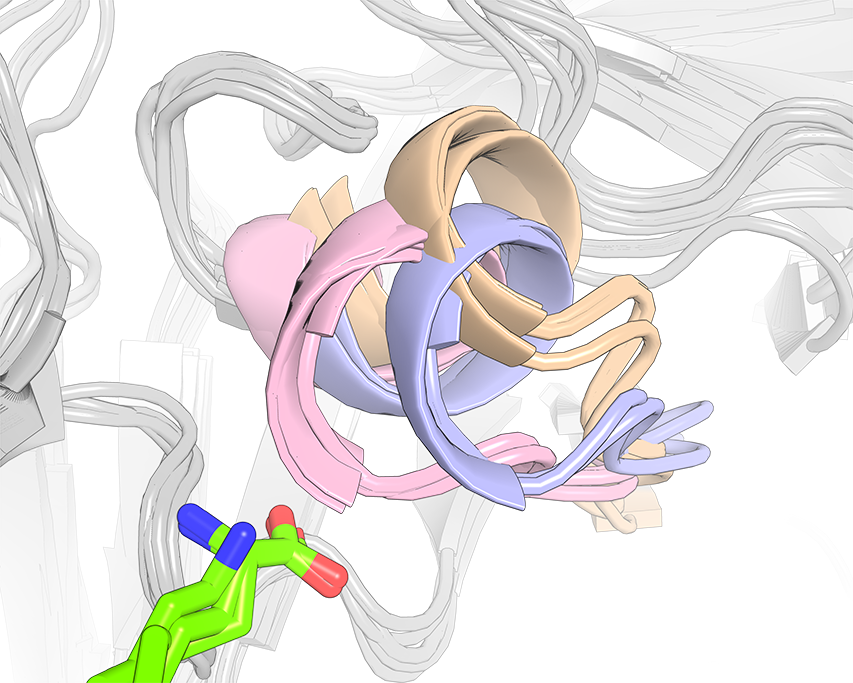Zebra3D
Tool for bioinformatic analysis of 3D-determinants of functional diversity
in protein superfamilies using machine learning

This software is free and open to all users with no login requirement
... to run on you local computer for full flexibility ...

... or use Mustguseal web-server to run Zebra3D on-line with default settings ...
... to identify and prioritize subfamily-specific regions in the common fold of a protein superfamily as 3D-determinants of functional diversity,
and to use this information for protein design and drug discovery
Version 1.1 since October 27th, 2020
THIS WEB-SITE/WEB-SERVER/SOFTWARE IS PROVIDED “AS IS”, WITHOUT WARRANTY OF ANY KIND, EXPRESS OR IMPLIED, INCLUDING BUT NOT LIMITED TO THE WARRANTIES OF MERCHANTABILITY, FITNESS FOR A PARTICULAR PURPOSE AND NONINFRINGEMENT. IN NO EVENT SHALL THE AUTHORS OR COPYRIGHT HOLDERS OR HARDWARE OWNERS OR WEB-SITE/WEB-SERVER/SOFTWARE MAINTEINERS/ADMINISTRATORS BE LIABLE FOR ANY CLAIM, DAMAGES OR OTHER LIABILITY, WHETHER IN AN ACTION OF CONTRACT, TORT OR OTHERWISE, ARISING FROM, OUT OF OR IN CONNECTION WITH THE WEB-SITE/WEB-SERVER/SOFTWARE OR THE USE OR OTHER DEALINGS IN THE WEB-SITE/WEB-SERVER/SOFTWARE. PLEASE NOTE THAT OUR WEBSITE COLLECTS STANDARD APACHE2 LOGS, INCLUDING DATES, TIMES, IP ADDRESSES, AND SPECIFIC WEB ADDRESSES ACCESSED. THIS DATA IS STORED FOR APPROXIMATELY ONE YEAR FOR SECURITY AND ANALYTICAL PURPOSES. YOUR PRIVACY IS IMPORTANT TO US, AND WE USE THIS INFORMATION SOLELY FOR WEBSITE IMPROVEMENT AND PROTECTION AGAINST POTENTIAL THREATS. BY USING OUR SITE, YOU CONSENT TO THIS DATA COLLECTION.
Publication: Timonina D., Sharapova Y., Švedas V., Suplatov D. (2021) Bioinformatic analysis of subfamily-specific regions in 3D-structures of homologs to study functional diversity and conformational plasticity in protein superfamilies. Comput. Struct. Biotechnol. J., 19, 1302-1311; DOI: 10.1016/j.csbj.2021.02.005
Navigation:
- Download section
- Installation instructions
- Algorithm Outline
- Preparation of the input data
- Description of the parameters
- User-defined statistical model to rank SSPs and calculate Z-scores
- Description of the results
- Examples of Zebra3D and interpretation of the results
- Citing Zebra3D
Highlights:
- Zebra3D is a novel bioinformatic tool for a systematic assessment of 3D-alignments of protein superfamilies to study 3D-structural determinants of functional diversity;
- The new algorithm can identify the subfamily-specific regions (SSRs) in 3D-structures of homologs – patterns of local 3D-structure (e.g., single residues, loops, or secondary structure fragments) that are spatially equivalent within families/subfamilies, but are different between them;
- SSRs represent plausible determinants of functional diversity in a superfamily. Knowledge of SSRs in your superfamily can help to understand how enzymes perform their natural functions, and can also assist the design of proteins with novel properties by implementing insertions/deletions, and help to assess function-related conformational plasticity in binding sites to provide insight into drug-binding interaction;
- A companion Mustguseal web-server is available to alleviate the burden on the end-user of identifying suitable homologs and performing a resource-consuming 3D-superimposition. That bioinformatic tool can handle the automatic collection and alignment of protein PDB entries belonging to the superfamily of interest, which reduces the minimal input required to operate the Zebra3D to single a PDB code. The automatically constructed 3D-alignment will be subjected to Zebra3D analysis with default settings on-line. The user can then download both the automatically constructed 3D-alignment and the default Zebra3D results from that web-server;
- Assessment of the 3D-specificity, which is the primary focus of Zebra3D, does not replace, but rather complements the sequence-based assessment of specificity (i.e. identification of "specific positions" in multiple sequence alignments). Thus, we suggest to use Zebra3D together with the Zebra2 sequence-based bioinformatic tool to assess all categories of subfamily-specific determinants of functional diversity in a protein superfamily. The results of the two tools are qualitatively different, as they assess mutually exclusive parts of a multiple alignment. See the Zebra3D publication for a further detailed discussion.
